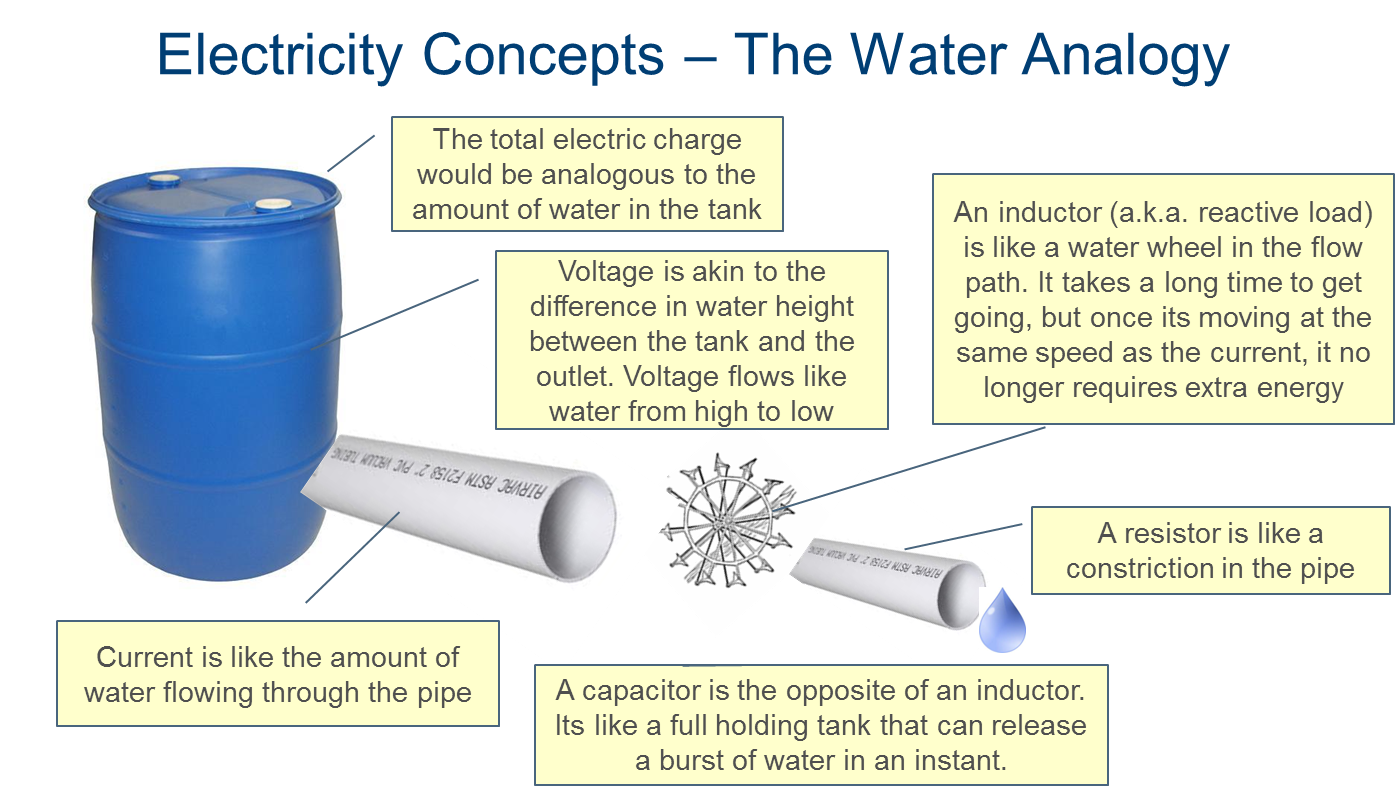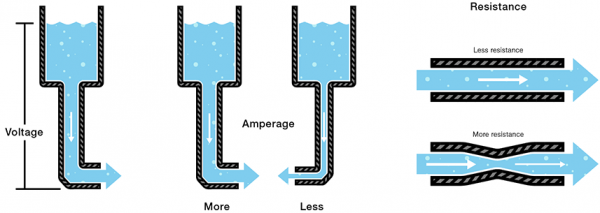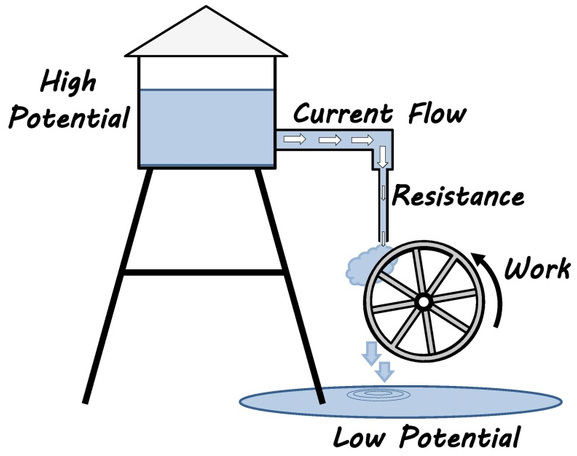Analogy Between Electricity and Hydraulics.
Posted: Sat Oct 08, 2016 11:08 pm
In viewtopic.php?f=6&t=33856 user <NO_NAME> explained to have problems with understanding difference between Watt and Joule.
For me always helpful was the analogy between electricity and hydraulics. First I thought to draw a picture, but then decided to use pictures in the internet.
I use this picture to explain how electricity basically works in Factorio:

https://batterybro.com/blogs/18650-whol ... y-part-one
With this example I explain it in my words:
- The level is the voltage (Volt) - Note: For easier understanding we assume, that the level of water is constant, no matter how much is in the upper tank.
- The amount of flow measured at any point of the pipe is the current (Ampere).
That's are units, that don't exist in Factorio (yet), but you need them to understand the next:
- The amount of water that flows per second down over the distance of the level is the power. Watt or (!!!) VoltAmpere: Flow multiplied with the level.
- The amount of water in the upper tank is the work (Joule). It's also Watt times Seconds (the tank needs some time to empty). When all the water in the upper tank has been flowing down you can use the produced energy to load an accumulator.
One good question of NONAME was: "Why not use WattSeconds then" (Flow of water x second)
Answer: Because you can create Work in many forms.
One is Watt * Time.
But as you see in the picture: It's also Level * Time * Volume.
In Factorio it is: Amount of Water per Second x Temperature.
Or you just rename it to "charge" in the accumulators. I saw that in other games.
And so on. There are hundreds of possible ways to "name" energy.
That is the reason, why it is an own unit: Because it seems to be so important, that you can define it in thousand different ways.
So I hope that makes now everything a bit more clear. If not: Well, see the next pictures, maybe they explain it better:

http://energytariffexperts.com/blog/201 ... -penalties

http://sparkfun28.rssing.com/chan-8070788/all_p12.html


http://yagitech.blogspot.de/p/electrical-safety.html

http://learn.olympiacircuits.com/electr ... water.html
Edit: This picture isn't 100% correct! Do you see the fail from what you learned from above?
For me always helpful was the analogy between electricity and hydraulics. First I thought to draw a picture, but then decided to use pictures in the internet.
I use this picture to explain how electricity basically works in Factorio:

https://batterybro.com/blogs/18650-whol ... y-part-one
With this example I explain it in my words:
- The level is the voltage (Volt) - Note: For easier understanding we assume, that the level of water is constant, no matter how much is in the upper tank.
- The amount of flow measured at any point of the pipe is the current (Ampere).
That's are units, that don't exist in Factorio (yet), but you need them to understand the next:
- The amount of water that flows per second down over the distance of the level is the power. Watt or (!!!) VoltAmpere: Flow multiplied with the level.
- The amount of water in the upper tank is the work (Joule). It's also Watt times Seconds (the tank needs some time to empty). When all the water in the upper tank has been flowing down you can use the produced energy to load an accumulator.
One good question of NONAME was: "Why not use WattSeconds then" (Flow of water x second)
Answer: Because you can create Work in many forms.
One is Watt * Time.
But as you see in the picture: It's also Level * Time * Volume.
In Factorio it is: Amount of Water per Second x Temperature.
Or you just rename it to "charge" in the accumulators. I saw that in other games.
And so on. There are hundreds of possible ways to "name" energy.
That is the reason, why it is an own unit: Because it seems to be so important, that you can define it in thousand different ways.
So I hope that makes now everything a bit more clear. If not: Well, see the next pictures, maybe they explain it better:

http://energytariffexperts.com/blog/201 ... -penalties

http://sparkfun28.rssing.com/chan-8070788/all_p12.html


http://yagitech.blogspot.de/p/electrical-safety.html

http://learn.olympiacircuits.com/electr ... water.html
Edit: This picture isn't 100% correct! Do you see the fail from what you learned from above?
Answer
Hope that helps.